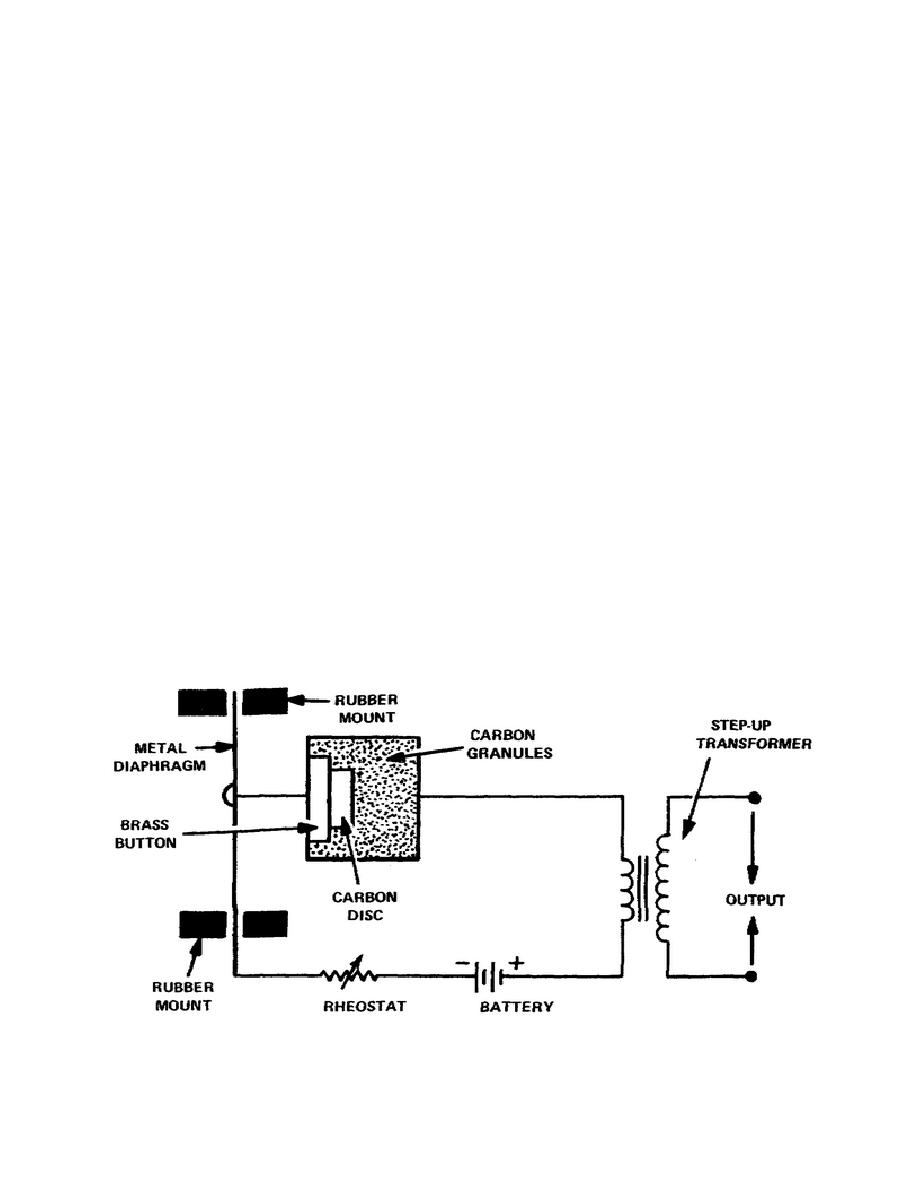
Learning Event 4:
USE BASIC AND SPECIAL TYPES OF MICROPHONES
1.
To further narrow a microphone's use for specific job applications, study the specific
characteristics of each type. These specific characteristics must be considered to best select a
microphone to perform a particular job. The five types of microphones presented here begin with the
least effective and progress to the most efficient.
2.
Carbon Microphone. This microphone is activated by carbon granules, and is held in a container
(a brass cup) attached to a metallic diaphragm (fig 2-25). Sound waves striking the diaphragm cause a
change in contact resistance among the granules. This change in contact causes a current from a battery,
connected in series with the carbon button (brass cup), and the input of a transformer to vary in
After leaving the output of the transformer, the sound becomes amplified and reproduced. This
principle of operation causes a high internal noise making the carbon microphone limited in its usage.
All telephone receivers use carbon microphones because telephone transmissions require only
intelligibility and voice clarity.
a. Frequency Response: 200-2000 Hz with much distortion present.
b. Sensitivity: Low or poor, must be close to sound source.
c. Impedance: Low.
d. Internal Noise: Very high due to the friction of the carbon granules.
e. Other characteristics: Inexpensive and rugged.
Primarily used for communications
(telephone).
Figure 2-25. Carbon microphone
26



 Previous Page
Previous Page
